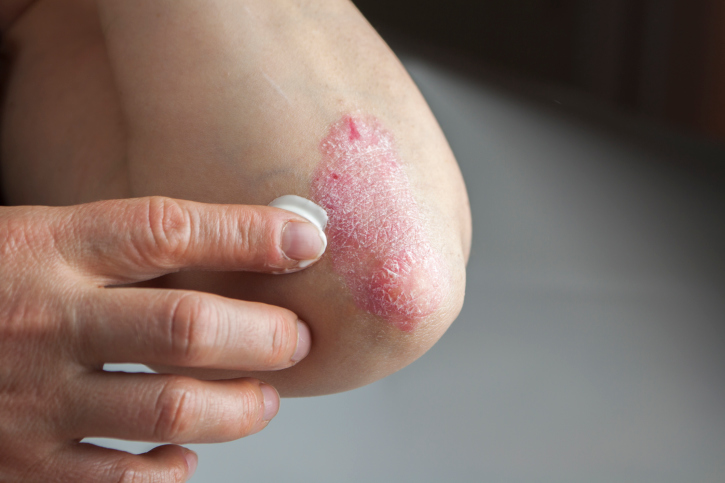Nocardiosis is a chronic systemic disease, respiratory in origin, that disseminates characteristically to the brain and occasionally to the kidney, heart, spleen, and other organs.
History of Nocardiosis.
Nocard in 1889 described an acid-fast, aerobic actinomycete isolated from cattle on the island of Guadeloupe with a lymphatic disease called farcy. In 1890 Eppinger first reported human nocardiosis in a glass blower, characterized by pulmonary disease and metastatic brain abscesses. The subsequent history of this disease is marked by clinical and mycologic confusion with actinomycosis.
Etiology of Nocardiosis.
Of the 35 species of nocardia, N. asteroides and N. brasiliensis are important pathogens for man; N. brasiliensis will be discussed under Maduromycosis.N. asteroides in tissues appears as septate hyphae, 0.5 to 1.0 /x in diameter, which may fragment into rod or coccoid forms that are gram-positive and partially acid-fast. In contrast to actinomycosis, granule formation is rare. In artificial media reproduction occurs by elongation, branching, and fragmentation. The micro-organism is aerobic and thermophilic but grows at room temperature as well. Colonies are pale yellow or creamy. Most strains in large inocula produce acute disease in guinea pigs and rabbits.
Epidemiology of Nocardiosis.
The disease is worldwide in distribution without recognized increased incidence in any geographic area. It occurs more frequently in older adults and twice as often in males as in females. The microorganism may be isolated from soil and from compost heaps. Mild or self-limited pulmonary nocardiosis may occur, but skin test surveys demonstrating widespread infection have not been done. Mastitis in dairy cattle and disease in dogs and other domestic ani-animals have been recognized, but animal-to-man or man-to-man contagion is not known. The frequency of disease appears to be increasing.
Pathology of Nocardiosis.
Suppuration and abscess formation are seen more often than granulomas. When the latter are present giant cells and caseation necrosis typical of tuberculosis are rare. The organism in tissue is stained well with Gram’s stain by the Brown and Brenn method.
Clinical Manifestations of Nocardiosis.
Pulmonary Form. In approximately 75 per cent of cases, frank pulmonary parenchymal’ disease is seen. The patient complains of cough productive of purulent and sometimes blood-tinged sputum. In 25 per cent of patients, pleurisy with effusion occurs, resulting occasionally in characteristic pleural-cutaneous fistulas. Fever and other systemic symptoms are common. Roentgenographically, the disease varies from localized nodules and infiltrations to dense lobar consolidation with abscess formation. However, cavitation is uncommon, and miliary lesions are rare.Recently some cases of pulmonary alveolar proteinosis have been associated with concurrent Nocardia (and other microbial) infections, but causal relationships have not been established.
Disseminated Form of Nocardiosis.
In contrast to actinomycosis, but like other systemic mycoses, N. asteroides infection spreads hematogenously. Brain abscess is an important feature historically and clinically. In contrast to cryptococcosis, fever is prominent and meningitis uncommon. The liver, kidney, spleen, subcutaneous tissue, and, rarely, adrenals, eyes, or other organs may be involved.
Diagnosis of Nocardiosis.
The diagnosis of nocardiosis is confirmed by the culture and identification of the micro-organism. Despite occasional contrary opinions, N. asteroides is rarely a saprophyte in man, and isolation strongly suggests etiologic relationship to disease present. Diagnostic skin and serologic tests have not been generally available.
The pattern of lung and metastatic brain lesions is suggestive of malignancy and of suppurative disease caused by a variety of pyogenic organisms. The pulmonary form resembles an acute bacterial pneumonia or tuberculosis. Nocardiosis may coexist occasionally with tuberculosis or may be a complication of other disease, especially pemphigus, leukemia,.and Hodgkin’s disease.
Treatment of Nocardiosis.
The sulfonamide drugs are the most effective therapeutic agents in experimental infection of laboratory animals and in human disease. Dosage should be adjusted to maintain a serum concentration of approximately 10 mg. per 100 ml., and treatment must be continued for at least two to three months. In some patients the infection does not respond to sulfonamide alone, and combination therapy with other antimicrobial drugs is necessary. Streptomycin and the tetracyclines are of demonstrated value in vitro and in experimental infections.Incision and drainage of abscesses are necessary and helpful.
Prognosis of Nocardiosis.
Man probably has a significant natural immunity to this micro-organism as indicated by the few cases of disease and the ubiquity of the organism in nature. Once active infection has occurred, however, disease is often progressive, resistant to treatment, and fatal. Even with treatment. probably not more than 50 per cent of patients recover.
